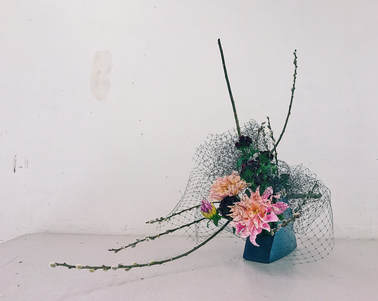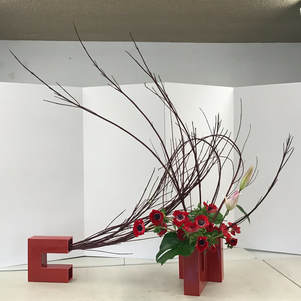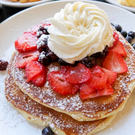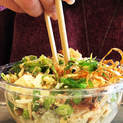- About Us
- Features
- Archive
- Videos
- The Secret success of Elmer Street
- Flying High From Below: LA's Fernando Martin
- Lip Candy
- Wafa Jaffal & her journey in Post Production!
- Guide to making a delicious arepas for your meal by Adolfo Can
- Waterworld
- Khanh's Kitchen
- From Las Vegas to LA
- Lighting the World Around Us: An Interview with Angela Gundelfinger
- Eating Disorder Healthcare: Mishna Erana Hernandez
- Meet Our New Staff!
- Meet Carlos Chavez!
- Meet Nicole Favors
- Meet David Petrosyan
- Meet Brittney Strong
- Meet Kaci Theros
- Meet Katrina Molle
- Hopping into the year of the Rabbit: Alhambra’s Lunar New Year Celebration
- 2023 Solar Decathlon
- Depop: A Circular Fashion Community
- Inside the Afro-Mexican Identity
- Meet Mimi Chao: Magnificent Creator of Mimochai
- Who’ll be the top dog? Let’s check out the annual Corgi Winter Nationals
- The Fine Line That Connects Skincare to Culture: Asian Skincare Routines
- One Of The Key Ways To Protect The Oceans Is To Rethink What We Are Doing On Land
- The Fine Line That Connects Skincare to Culture: Asian Skincare Routines
- Growing Up With a Mixed Family Made Me Confident in Being Afro-Latina
- The Benefits of Shopping At Your Local Farmers’ Market
- Discovering Voice: An Interview With Nicole Favors
- Short Form: New Creative Producing Track At Woodbury University
- Housing Crisis in Los Angeles
- How Minimalism Can Benefit Your Life as a Student
- "Insights from Fashion Marketing Chair and Forecasting Expert Wendy Bendoni on the Evolving Landscape of Fashion Consumption and Sustainability"
- The Gun Violence Issue in America
- From the Court to Console: An Interview With Tim Parham
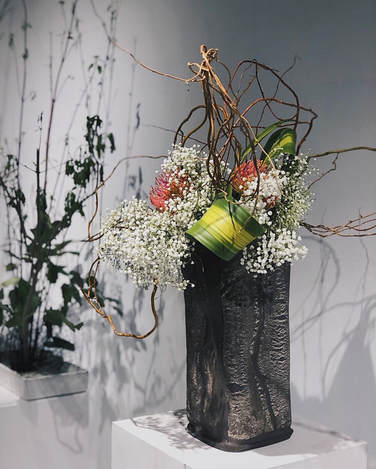
Ikebana, it is a Japanese flower arrangement. “Ike” means alive and “bana” means flower in Japanese. Ikebana is not the same as the Western-style flower arrangements you see at the restaurants or hotel’s reception. Arrangements are made based on some certain rules and it values the beauty of asymmetry. Ikebana does not only have one style. Ikebana consists of more than 300 schools and it holds more than 700 years of history.
The style I am learning is called “Sogetsu” style. The Sogetsu style was founded in 1927 by Sofu Teshigawara and it is considered a newer style. I have been practicing Ikebana over 8 years and yet I am still in the process of learning to become a better artist. Even though Sogetsu is considered a “new style,” with its unique and dynamic style, it is considered one of the biggest three schools in Ikebana. There are a lot of people in United States who are learning Sogetsu style Ikebana. Sogetsu LA Branch has been active over 40 years.
You do not need any designing background to start Ikebana because you will start with learning rules for Ikebana first. These are the equipment you need to start learning Ikebana.
The style I am learning is called “Sogetsu” style. The Sogetsu style was founded in 1927 by Sofu Teshigawara and it is considered a newer style. I have been practicing Ikebana over 8 years and yet I am still in the process of learning to become a better artist. Even though Sogetsu is considered a “new style,” with its unique and dynamic style, it is considered one of the biggest three schools in Ikebana. There are a lot of people in United States who are learning Sogetsu style Ikebana. Sogetsu LA Branch has been active over 40 years.
You do not need any designing background to start Ikebana because you will start with learning rules for Ikebana first. These are the equipment you need to start learning Ikebana.
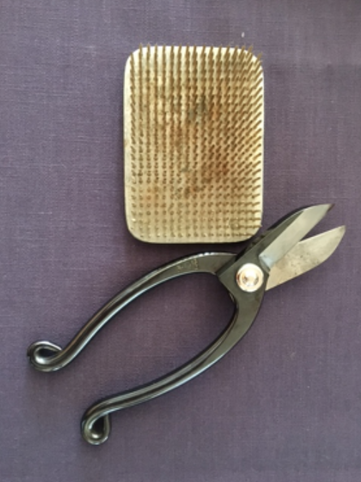 Ikebana scissors and Kenzan
Ikebana scissors and Kenzan
- A bowl for mizukiri
Mizukiri is the technique we use to make flowers last longer. Mizukiri means cutting in water. By cutting the stems in an angle in water, it prevents air from getting inside the stem so the stems do not get dry. You might need an extra bowl to keep the flowers fresh and protect them from heat damage in summer. - Ikebana scissors
They are quite different from normal gardening scissors, they are no holes. They are also crafted heavier to cut thick branches. - Suiban (shallow vessel)
In the first year, you will learn basic rules with Suiban - Kenzan (spiky frog)
Kenzan is used to hold the stems and branches and secure them. It comes in different shapes and sizes depending on the size of your vase. - Textbook
As I mentioned, you have a lot of rules and forms to learn in the first two years. The textbook will help you learn and understand in depth the concept of Ikebana. It is written both in English and Japanese.
Rules of Ikebana
The basic rules of Ikebana are Shin, Soe, Hikae. Those are the main pieces of the arrangement. Shin is the longest stem. It should be at 1.5 times of length or width of the vase. The second longest stem is Soe. Soe should be around three-quarters of the length of Shin. Hikae should be half of the length of Soe. Other stems besides those main three branches are called Jushi, which means support branches in Japanese. Those stems are to compliment the main branches. The number of branches are also important. It is considered that odd numbers always more balanced than even numbers.
The basic rules of Ikebana are Shin, Soe, Hikae. Those are the main pieces of the arrangement. Shin is the longest stem. It should be at 1.5 times of length or width of the vase. The second longest stem is Soe. Soe should be around three-quarters of the length of Shin. Hikae should be half of the length of Soe. Other stems besides those main three branches are called Jushi, which means support branches in Japanese. Those stems are to compliment the main branches. The number of branches are also important. It is considered that odd numbers always more balanced than even numbers.
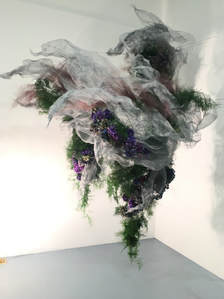
I keep mentioning that there are rules in Ikebana, however, Sogetsu is more of a freestyle compared to other schools. After two years of learning basic rules, you will be able to break the rules and really express yourself.
For materials, there are no rules. We do not only use flowers, but you can also use dried materials, fruits, vegetables, and non-plant materials, such as wires, papers, plastics and so on. We had an exhibit recently in Little Tokyo in November. For my individual work, I used huge leaves which were half dry to play with the texture of the plant.
As for our group project, the theme was mystique. We used chicken wire and window screens to create mass and shape and make them into a huge tornado with both dried and fresh hydrangeas.
For materials, there are no rules. We do not only use flowers, but you can also use dried materials, fruits, vegetables, and non-plant materials, such as wires, papers, plastics and so on. We had an exhibit recently in Little Tokyo in November. For my individual work, I used huge leaves which were half dry to play with the texture of the plant.
As for our group project, the theme was mystique. We used chicken wire and window screens to create mass and shape and make them into a huge tornado with both dried and fresh hydrangeas.
Ikebana can be very therapeutic. When I am stressed, Ikebana makes me concentrate on one thing without thinking. Ikebana can express a flower's organic beauty that a simple bouquet cannot express. There is no right or wrong in Ikebana. It does require practice, but it is an art that everyone can express themselves.
If you are interested in taking Ikebana classes, here are some classes available in LA County Area:
www.sogetsula.com/classes
If you are interested in taking Ikebana classes, here are some classes available in LA County Area:
www.sogetsula.com/classes
Links |
7500 |
|
